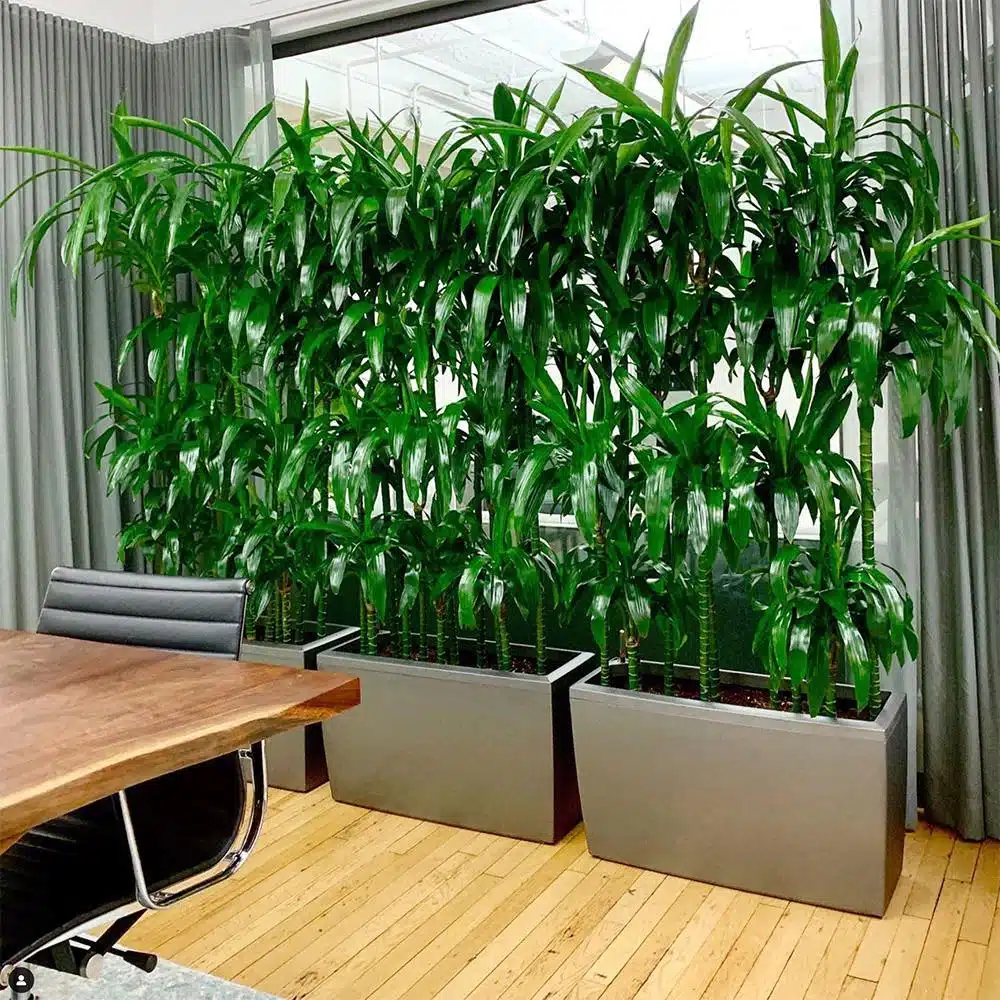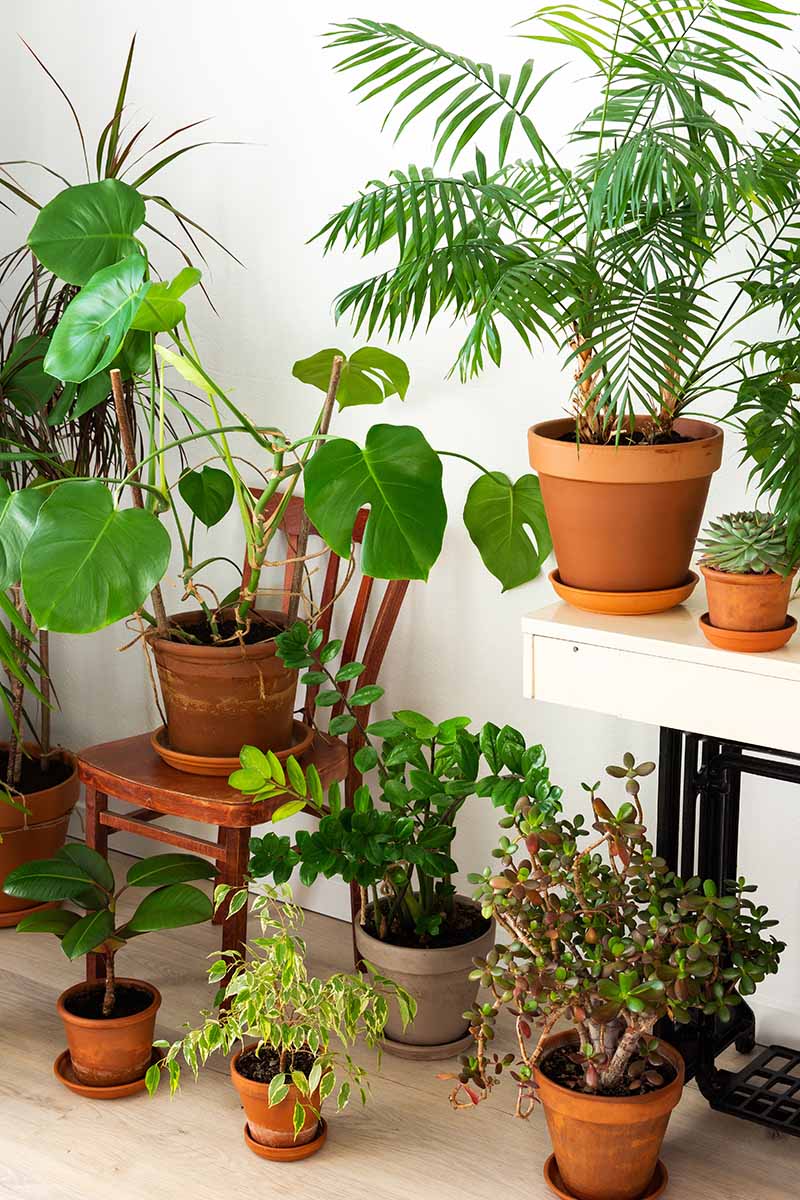Low Maintenance and Beautiful: Best Low-Light Indoor Plants for Your Home
Low Maintenance and Beautiful: Best Low-Light Indoor Plants for Your Home
Blog Article
Reveal the Keys of Low-Light Indoor Plants and Just How They Improve Your Atmosphere
Low-light interior plants have gathered raising attention for their unique capability to improve both aesthetic charm and ecological high quality within homes and offices. These resilient varieties, including the Serpent Plant and Tranquility Lily, not only flourish in tough illumination conditions however additionally play a critical function in air purification and emotional wellness. Comprehending the details advantages and care needs of these plants can substantially impact your space. As we explore the details of their benefits, you might discover insights that can transform your surroundings in unexpected means.
Benefits of Low-Light Indoor Plants
Although lots of people think that indoor plants need plentiful sunshine to grow, low-light interior plants provide a wide variety of benefits that make them optimal for numerous environments. One of the primary benefits is their adaptability; they can grow in rooms with limited all-natural light, such as offices, basements, or spaces with tiny home windows. This function enables people to improve their environments with plant, adding to improved aesthetics without the requirement for comprehensive lights adjustments.
Furthermore, low-light interior plants can significantly improve indoor air high quality by releasing and filtering harmful contaminants oxygen, making living spaces healthier. Research has revealed that certain varieties can absorb contaminants, thus advertising a cleaner environment. In addition, they can improve psychological wellness by reducing anxiety and enhancing productivity. The visibility of plants has actually been linked to greater feelings of harmony and emphasis.
Furthermore, low-light plants often call for less maintenance than their sun-loving equivalents, making them ideal for busy individuals or those new to gardening. Their durability permits them to flourish with very little intervention, hence supplying a fulfilling experience for plant lovers and amateurs alike. In recap, low-light interior plants offer both functional and visual functions, making them useful enhancements to any kind of space.
Top Low-Light Plant Ranges
Low-light interior plants come in a range of species, each offering unique features and benefits fit for dim environments. Amongst one of the most preferred varieties is the Serpent Plant (Sansevieria), known for its air-purifying capacities and building leaves. This resistant plant grows on forget and can tolerate a variety of light conditions.
An additional superb option is the ZZ Plant (Zamioculcas zamiifolia), which includes shiny, dark environment-friendly fallen leaves and is highly drought-tolerant. Its versatility makes it a preferred for offices and homes with restricted sunshine.
The Pothos (Epipremnum aureum) is additionally a top competitor, with its tracking creeping plants and heart-shaped fallen leaves - Best low-light indoor plants. This versatile plant can be educated to climb up or cascade, adding aesthetic rate of interest to any area

Treatment Tips for Low-Light Plants
Caring for low-light view publisher site indoor plants needs a nuanced understanding of their specific demands to make certain optimum growth and vitality. It is important to pick the ideal potting mix, as a well-draining dirt is vital to protect against origin rot. A mix developed for houseplants, often containing peat moss and perlite, functions well for most low-light selections.
Watering is one more vital element of treatment. Low-light plants normally require much less regular watering contrasted to their sun-loving counterparts.
Fertilization must be approached with caution. During the growing season, a watered down fluid fertilizer can be used monthly, yet in winter season, numerous low-light plants go into dormancy and call for little to no fertilization.
Last but not least, it's important to periodically clean the fallen leaves to remove dirt, permitting better light absorption. By adhering to these treatment pointers, you can grow a thriving environment for your low-light interior plants, improving both their appearance and long life.
Enhancing Air Quality With Plants
Interior plants play a substantial role in improving air quality within homes and workplace. Via the process of photosynthesis, these plants soak up carbon dioxide and launch oxygen, adding to a much healthier ambience. Furthermore, certain low-light interior plants possess the capability to filter damaging contaminants, such as formaldehyde, trichloroethylene, and benzene, which are frequently located in indoor atmospheres.
:max_bytes(150000):strip_icc()/low-light-plants-GettyImages-1360510675-50ad3d1ad95942ecaed5e4cee84f7572.jpg)
Furthermore, the existence of why not find out more indoor plants can enhance humidity degrees, which assists minimize completely dry skin and respiratory problems, additionally boosting total wellness. This ability to boost air top quality not only promotes physical health but additionally supports mental wellness.
Including low-light helpful resources interior plants into your living and working spaces can lead to an extra invigorating and dynamic setting (Best low-light indoor plants). Buying these natural air purifiers is an easy yet efficient technique for boosting interior air quality and promoting a healthier way of life
Developing a Serene Indoor Space
The integration of plants into living spaces not just improves air high quality but additionally adds to a tranquil ambience. Low-light interior plants, such as serpent plants and pothos, are specifically effective in developing a calm environment, as they thrive in conditions that may otherwise be unwelcoming for various other greenery. Their rich foliage offers a relaxing visual, decreasing tension and promoting relaxation.
Integrating these plants into your office or home can evoke a sense of peace and health. Purposefully putting them in locations where you spend considerable time, such as living spaces or work spaces, enables an immersive experience with nature, which has been revealed to enhance mood and cognitive feature.
Additionally, the mild motion of leaves in reaction to airflow can develop a vibrant visual element that boosts the general atmosphere. Take into consideration utilizing a variety of plant elevations and structures to add depth and passion to your area. With thoughtful positioning and treatment, low-light interior plants can transform any location into a peaceful shelter, promoting not only visual satisfaction but additionally emotional and emotional health.

Verdict
Incorporating low-light interior plants into various settings returns substantial benefits, including boosted air quality and boosted visual appeal. The transformative power of low-light plants emphasizes their value in boosting both household and job-related settings.
Although many individuals presume that indoor plants call for bountiful sunshine to flourish, low-light indoor plants supply a plethora of advantages that make them suitable for various environments.Additionally, low-light indoor plants can significantly improve interior air quality by launching and filtering harmful contaminants oxygen, making living spaces healthier. Additionally, certain low-light indoor plants possess the ability to filter dangerous pollutants, such as trichloroethylene, formaldehyde, and benzene, which are commonly located in interior settings.
Low-light indoor plants, such as snake plants and pothos, are particularly effective in creating a serene atmosphere, as they grow in problems that may otherwise be inhospitable for other plant.Incorporating low-light indoor plants right into various environments yields significant benefits, including improved air quality and enhanced visual allure.
Report this page